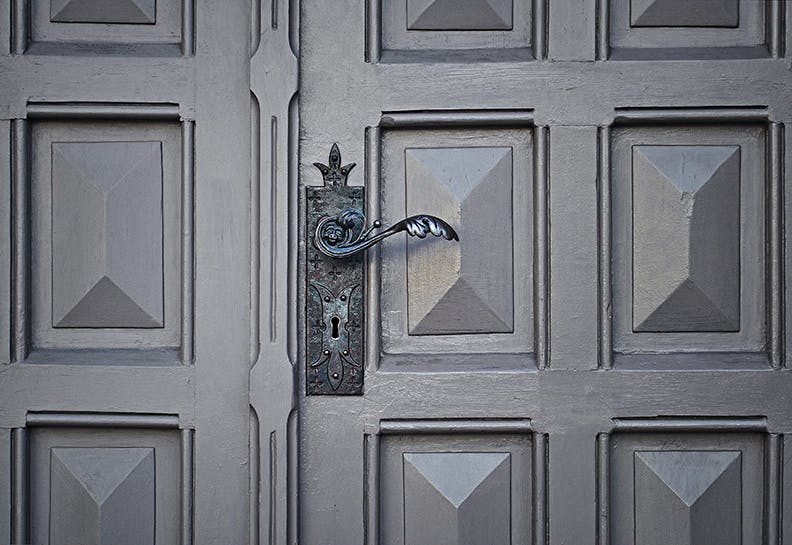
There are dozens of lock types that homeowners can install on the doors and furniture of their homes. Knowing the difference between locks can help homeowners make informed decisions that can increase security and protection around the home. In this article, you will find descriptions of common locks found in homes and businesses that will help homeowners gauge individual locks’ safety.

Padlock
Padlocks are a non-attached lock used to protect a door, box, or other protected places. There are two main types of padlocks: combination or key. On a combination padlock, you will see a series of rotatable numbers or letters. The numbers or letters can be rotated to create a code that allows the user to unlock the padlock. A key padlock requires a key to open the lock. Both are extremely common and can be found on bike racks and other commonplace locations. There are various types, sizes, and strengths within the two categories of combination padlocks and key padlocks. Usually, the smaller the padlock is, the easier it will be for a thief or burglar to cut the padlock.
How Safe Are Padlocks?
Padlocks are ranked by their strength and their key differs. The strength of a padlock refers to the ability of the lock to withstand force either by pulling, cutting, or sawing. Key differs is a locksmithing term that describes the number of combinations or key options that can open the lock. Because most locks are mass-manufactured, a person who has the same type of padlock may also have the same key. For a combination padlock, a person could have chosen the same combination that you use to lock your padlock, giving the stranger access to your padlock.
A grade two security padlock will have some resistance to pulling and cutting and has 1,000 key differs. A grade three security padlock is twice as strong as the grade two and has 2,500 key differs. A grade four security padlock is twice as strong as the grade three and four times as strong as the grade two, with 5,000 key differs. This means that there are 5,000 different keys and combinations, and only one that can open the specific padlock. A higher key differ means that the lock is more secure and significantly less likely to be picked or cut. Padlocks that are higher than grade five are extremely difficult to break into and used for securing shipping containers.
How to Pick a Padlock
If you have the right tools, it’s fairly simple to pick a low-grade padlock. All you will need is a tension wrench and a pick. First, place the tension wrench inside the keyhole of the padlock, opposite of the pins. With the wrench inserted, place pressure with your thumbs against the wrench in the direction that the lock will open (as if turning a key). Then, insert the pick inside the lock just below the tension wrench. Inside the lock, there are several pins at different heights and sizes. To open a keyed lock, each pin needs to be pressed upward. You can wiggle the pick over the pins starting from the back of the lock and moving forward. This will take practice, but you should be able to unlock each pin and then unlock the padlock.
To unlock a combination lock or keyless lock, start by pulling the lock down to create force on the top of the lock. Test turn each section of the lock (for locks with separate combination wheels) and find the wheel that is most difficult to turn. This will be your starting wheel. Turn the wheel, stopping on each number or letter, until you hear the lock click and the body of the lock move downward. Stop on the number or letter. Then start over, with the other few wheels. Turn each of the remaining wheels until you find the one that is most difficult to turn and then slowly turn the wheel.
Padlocks are not the most secure lock if you’re working with low-grade security padlocks. For most people, using a padlock will not protect you from those who know how to work with a lock. If you are currently using a padlock in your home, make sure that you have other means of security protecting the area.
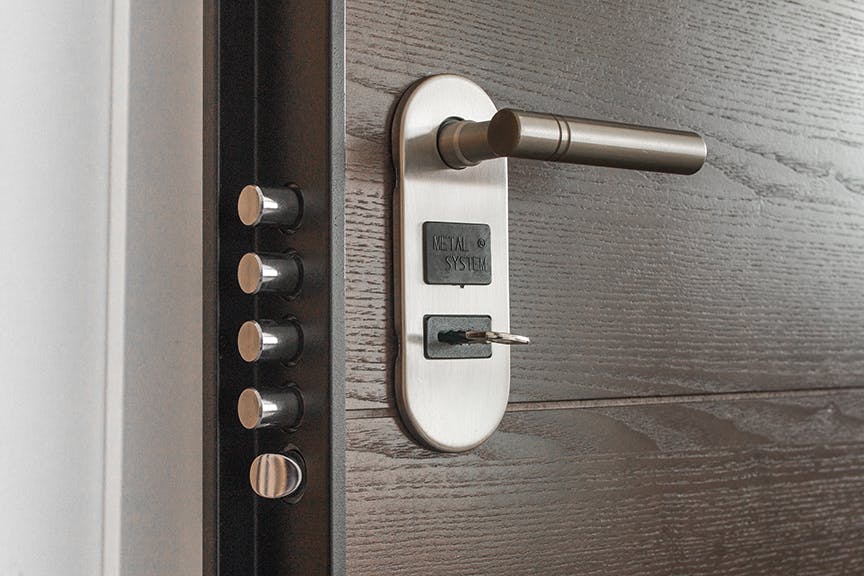
Deadbolt Lock
There are three main types of deadbolts: single, double, and lockable thumb-turn. Single-cylinder deadbolts are the most common type of deadbolt used in homes in the United States. Single-cylinder locks have a key cylinder (which can be opened using a key) on the outside and a lock thumb-turn on the inside (which can be locked and unlocked without a key). A double cylinder deadbolt has a lock on both the inside and the outside of the door, meaning that you need a key to open the door from any direction. This type of lock is uncommon because it requires the user to carry their key to the door, even inside their own home. It also has safety issues since the door will stay locked unless there is a key—if there is a house fire and those inside cannot find the key, double cylinder deadbolts present an unlucky obstacle. If people are inside the home, it is highly recommended that a key to a double cylinder deadbolt is left on the inside of the house near the door so that they can make a quick exit in case of an emergency.
The final type of deadbolt lock is the lockable thumb-turn. The lockable thumb-turn is a combination of the first two types of deadbolts, creating a hybrid. There is a keyhole on the outside of the door that can only be opened with a key. On the inside, there is a thumb-turn that can also be locked with a key. This gives the option to lock the door on the inside or the option to leave the inside lock unlocked.
How Safe Are Deadbolts?
Single-cylinder deadbolts have one main security flaw. The inner thumb-turn can be locked and unlocked from the inside without a key. This means that if an intruder can access the inside of the door through a nearby window panel, they can simply turn the inside thumb-turn, and the door will unlock. If the intruder is desperate and has the right tools, they can even open the exterior door using the inner thumb-turn by going through the peephole.
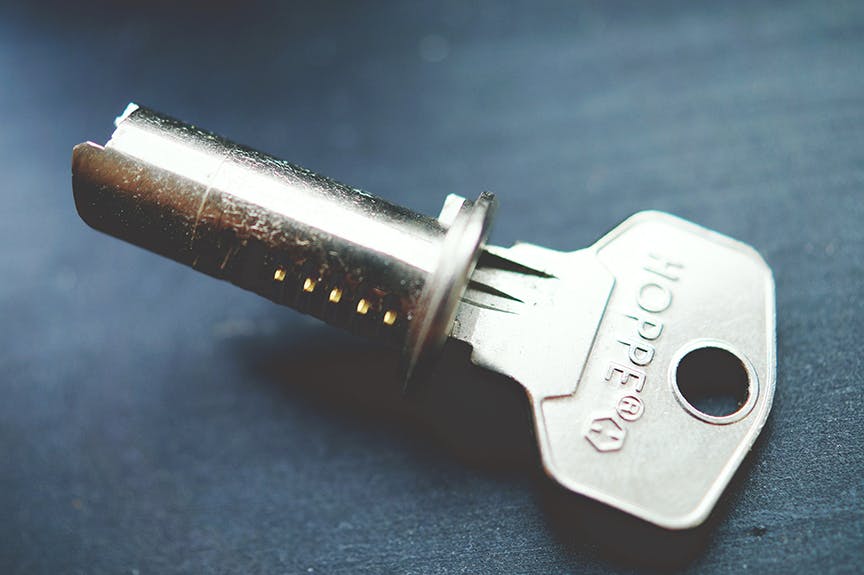
A double cylinder thumb-turn is more effective and safer than the single cylinder. Because there are two locks, an intruder would have to pick both locks to open the door. In a case where the intruder can’t break through the lock, most intruders might attempt to knock down the door. When this is the case, the homeowner must have strong doors rather than cheap wooden manufactured doors. If using the right techniques, a person can kick down a door by kicking next to the lock. With enough force, the intruder can splinter the wood, though the lock will hold. Kicking the door will cause the door to collapse inwards while the deadbolt stays in its place. Homeowners worried about their safety should install thick, heavy doors in addition to a double cylinder deadbolt.
How to Pick a Deadbolt
Picking a single cylinder deadbolt (which is standard for most homes) is surprisingly simple. You will only need two tools to pick the lock: a tension wrench and a lock pick. To pick the lock, place the tension wrench at the bottom of the keyhole and press the thumb of your weaker hand against the wrench, creating tension in the direction that the lock will turn. Slide the pick into the deadbolt lock above the tension wrench and move the pick to the back of the lock. Once the pick is in position, begin pushing up each of the pins. It’s helpful if you know what you’re looking for when picking this type of lock. Each pin should click into place. When all the pins are released, the tension wrench will move with the lock as long as you are maintaining constant pressure on the lock.
Deadbolts are fairly easy to pick if the lock is a single cylinder lock. For added protection, use a double cylinder lock. A double cylinder lock is more difficult because unlocking the outer lock will not unlock the inner lock. This ensures that a lockpicker will remain on the outside of your home.

Knob Lock
Knob locks are commonly found in American homes on many doors throughout the house. You might find a knob lock on the house’s side doors, basement doors, or backdoors. They can also be found inside the home on bedroom doors and bathroom doors.
How Safe are Knob Locks?
Knob locks are not a safe option for outer doors. The locking cylinder of a knob lock is located inside the outer knob and not inside the door. This means that if the knob is removed, the door will open. This creates a safety concern for any door with a knob lock that leads to the outside. Burglars can easily gain access to the house by taking a hammer and knocking off the outer knob. If your home has knob locks on any of the doors leading outside, consider replacing the knob lock with a more secure type of lock.
Knob locks are an understandable option for doors inside the house, unless you want maximum security for every room in the house. There are very few instances inside the home where you might need more security than a knob lock will offer. However, if you are concerned about your safety inside your home or your neighborhood has a history of violent crime and break-ins, you could consider replacing the indoor knob locks with a more secure type of lock.
How to Pick a Knob Lock
Unlocking a knob lock is similar to unlocking other varieties of locks. What you will need is a simple lock picking kit, including a tension wrench and a pick. Place the tension wrench inside the keyhole and press it against the side where the bottom of the key would be placed. Turn the tension wrench from side to side to determine which direction the key would turn the lock to unlock the door. Once you know which direction the key would turn, place pressure against the tension wrench in that direction.
Insert the pick above the tension wrench, while still maintaining the pressure on the wrench. Move the pick to the back of the lock and slide it until you find the first pin. Press upward on the pin furthest back until you hear a small click. That shows the pin has been moved into the unlocked position. If you lose the tension on the tension wrench at any point, the pins will move back into the locked position. As you move the pick down and unlock the next pins, the tension wrench should shift slightly. Move with each shift, never letting up the tension on the wrench. When the last pin is clicked into place, the tension wrench will move into the unlocked position, and you can open the door.
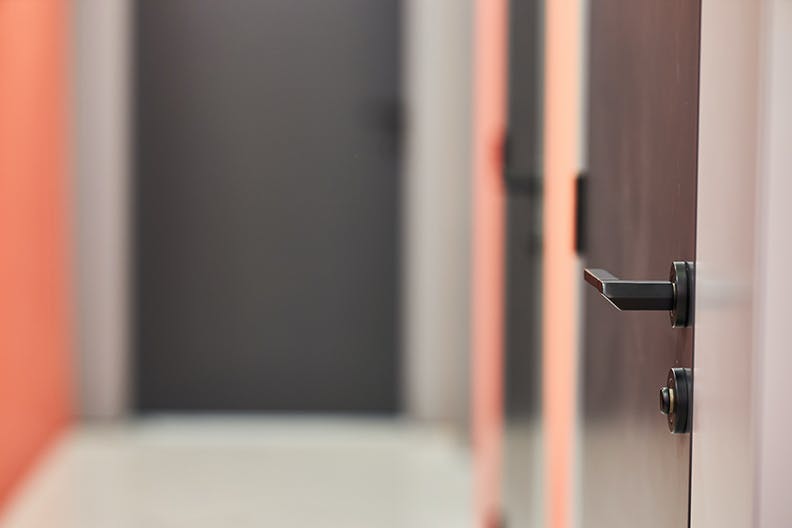
Lever Handle Lock
A lever handle lock is often used in commercial settings. The most common places to see a lever handle lock are in colleges, businesses, and other settings where a handicap-accessible door is easy to find. Lever handle locks are ADA accessible and have right and left-handed options. Some lever handle locks are used in new apartments as the door handles to the bathrooms, closets, and bedrooms of the apartment. There are two main types of lever handle locks. The first type, which is most common in commercial settings, has an inner thumb-turn and an outer keyhole. Some lever handle locks have a deadbolt latch, which is tamper-proof, meaning that a person can’t open it using a credit card. However, not all latches are tamper-proof. To check to see if your latch is tamper-proof, open the door and look at the latch. If there is a small metal bolt on the backside of the latch, the latch is a deadbolt. If not, the latch can most likely be opened using a credit card or piece of plastic against the strike plate.
The second type of lever handle lock is common in residential settings, and it is made to be picked. It will have a thumb-turn on one side and a small metal slit on the other side. This door can be locked from the inside by turning the thumb-turn into the locked position. However, it can also be unlocked by using a coin or card on the outside of the lock. A person can insert the coin into the metal slot and then turn the slot as if the coin were a key to the door. This lock is not meant to be used for security and protection. Instead, it is an easy-access door that gives the room the appearance of complete privacy, while also allowing anyone outside of the room to gain easy access to the inside. This door lock type is common in apartment housing so that maintenance workers can easily access an accidentally locked room.
Is a Lever Handle Lock Safe?
Lever handle locks are not your safest option if you are looking for security. They provide partial privacy and will secure most doors from the average person. However, if a thief, burglar, or criminal is trying to get inside a door, they will be able to pick the lock with ease. If you’re considering installing a lever handle lock on a door that you want to remain secure, this is not the best option. Lever handle locks will provide limited security and protection.
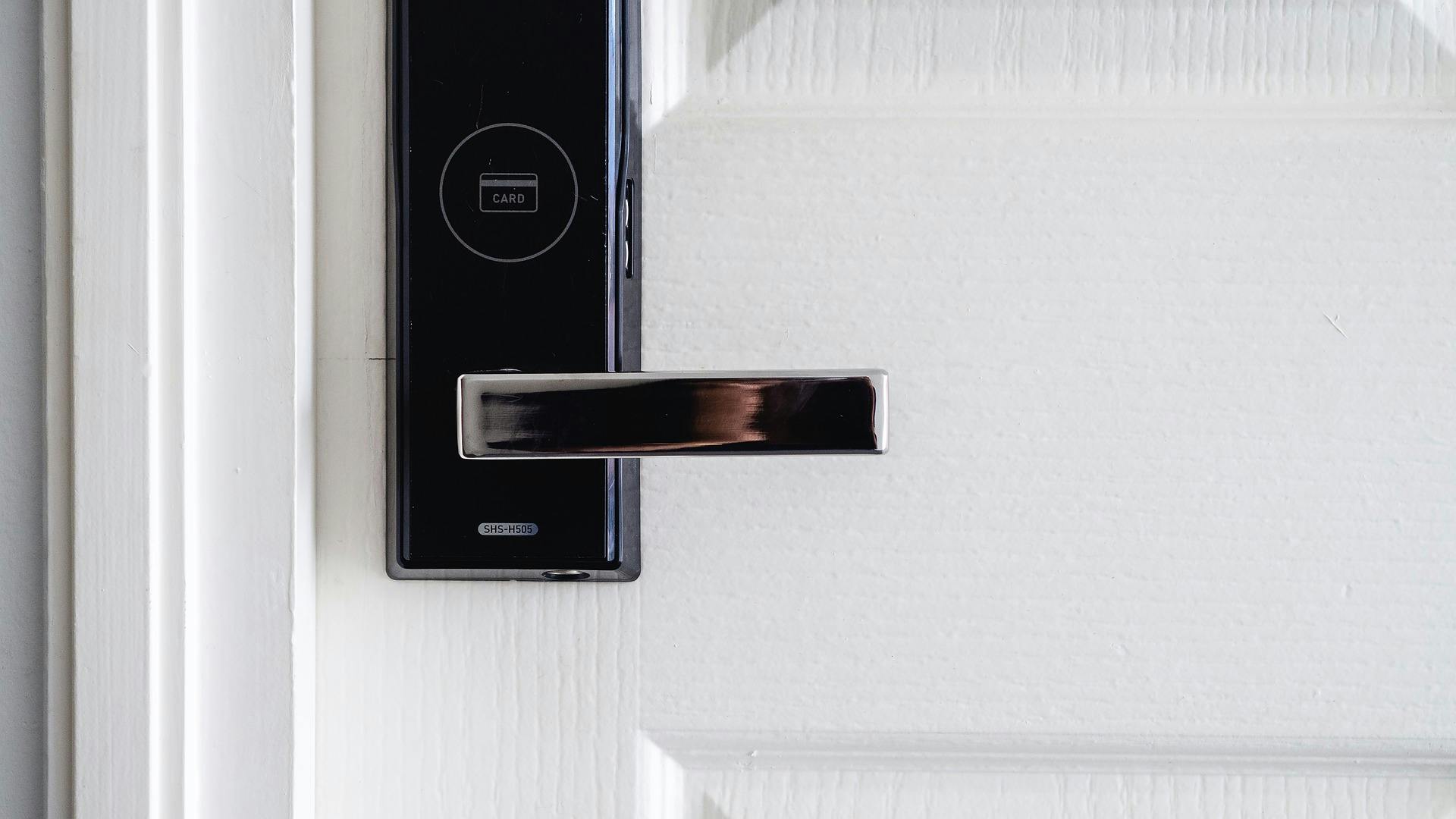
How to Pick a Lever Handle Lock
You will need a tension wrench and pick to unlock a lever lock with a keyhole and thumb-turn. Start by holding the handle of the door and inserting the pick. Press the pick to the back of the hole and feel for the number of levers inside. This type of lock will use between three and five levers that need to be individually unlocked to open the door. Once you know how many levers you’re looking for, remove the pick and insert the tension wrench at the bottom of the keyhole. Reinsert the pick and press up on each lever individually, looking for which lever is hardest to press upward. The lever that has the most tension will be your starting lever. Slowly press the tense lever all the way up until the tension wrench moves slightly, while still maintaining the tension on the wrench. Move onto the next lever by looking for which lever is most difficult to turn and repeat the steps until all levels are unlocked. When the final lever is lifted, use the tension pick to turn the lock and unlock the door.
Cam Lock
A cam lock is used for filing cabinets and mailboxes. Cam locks are also used as furniture locks. Cam locks are often small locks that are meant to secure a single plate that will hold a door closed. The lock is attached to a metal plate that holds the door closed. When the cam lock is left unlocked, the door can swing open and closed and will often be left slightly ajar. When the cam lock is closed and locked, a small metal plate acts as the locking mechanism and will swing into a groove on the cabinet or mailbox door, locking the door in place.
How Safe Are Cam Locks?
Cam locks vary in strength, depending on where you buy the lock and the lock company’s quality. If you buy a standard cam lock, which costs just a few dollars, a lock picker could likely gain easy access to whatever you’re attempting to secure with the cam lock. If you’re securing something extremely valuable, you should consider replacing the cam lock with something more durable. Cam locks are a great lock to use as a table lock, furniture lock, or cabinet lock.
How to Pick a Cam Lock
To pick a cam lock, you will need only a tension pick and a wave pick. A wave pick has a wave-like image that helps lock pickers to press in the pins faster and easier. This type of pick is great for smaller locks where it might be difficult to feel for individual pins. Start by inserting the tension pick at the bottom of the lock, turning with the key lock. Then insert the wave pick and slide the pick up and down inside the cam lock. Because the lock is small, this might take a while to hit the individual pins with the waves on the pick. However, if a person practices with various cam locks, unlocking cam locks will be incredibly easy.
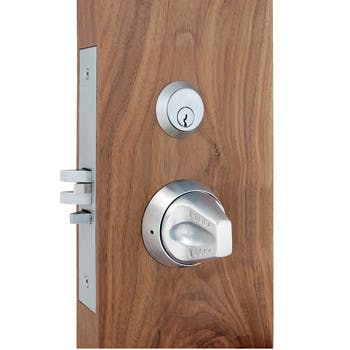
Mortise Lock
Mortise cylinder locks (which can also be spelled as “mortice locks”) can be found as glass door locks, commercial door locks, and apartment door locks. Mortise locks are a combination between rim locks and mortise cylinder locks. Mortise locks are often confused with rim locks. From a single glance, the two locks seem extremely similar. However, the two lock types are extremely different. The first difference between the mortise lock and the rim lock is threading. Mortise locks show threading on the outside of the lock, which secures the lock to the body. The threading in the lock lines up with the threading of the body, securing the lock in place. When the threading is aligned, the lock is ready to be used.
A mortise lock will also have a cam body on the backside of the lock. According to Locknet.com, “The tailpiece for a mortise cylinder is flush against the back of the lock. Most often, it will have a circular shape with a small rectangle coming out of it (resembling a flat Ping-Pong paddle). The round section will be fastened onto the cylinder with screws. When the plug is rotated, the rectangular end will move and open the lock. A downward turn of the cam unlocks the device by depressing a button within the lock body. The depression of that button is what opens the lock.” The interior lock body is the most defining feature of the mortise cylinder. The lock is named for a “mortise,” which refers to the hole cut into the door. If the door is held open past the door frame, you will be able to see a faceplate the size of a VHS tape, indicating the mortise lock.
How Safe Are Mortise Locks?
Compared to other locks on this list, the mortise lock is fairly secure. Mortise locks reinforce the door itself due to the size of the lock plate. They are reliable and strong, providing good door security. However, a homeowner shouldn’t plan to rely solely on a mortise lock to protect their home. Although mortise locks can improve your door safety, they are not perfect. In order to provide your home with the best security possible, homeowners should add additional security products, such as an alarm system, to the home. Having multiple security devices will ensure that your home has the best protection possible.
How to Pick a Mortise Lock
Mortise locks are meant for higher security than other lock types. Because of this, lock picking a mortise lock will take time and practice. It also requires a full lock picking kit. Some high-security mortise locks are extremely difficult to pick, and it’s unrealistic to expect the average burglar to pick a high-security mortise lock. Most basic mortise locks will have a lever and bolt that need to be lifted and slid to the side, making it difficult for amateur lock pickers to open. Here’s how to pick a low-security mortise lock.
To pick a low-security mortise lock, you will need to first understand that the lock is different from the other locks listed here. Most locks have pins that need to be pushed upwards to unlock. The mortise lock does not have pins. Instead, a basic mortise lock has a lever and a bolt. To unlock the mortise lock, you will need two picks that are bent upward at a 90-degree angle. Start by inserting the first pick into the keyhole and pressing it upward to place tension on the bolt. You will know that there is tension on the bolt when you can feel the bolt move upward. Next, insert the second pick below the first and at an angle. Try to catch the lever with the second pick and lift it up and over the bolt. Once the lever is moved over the bolt, you can use the second pick to slide the lever out of the way, which opens the door.
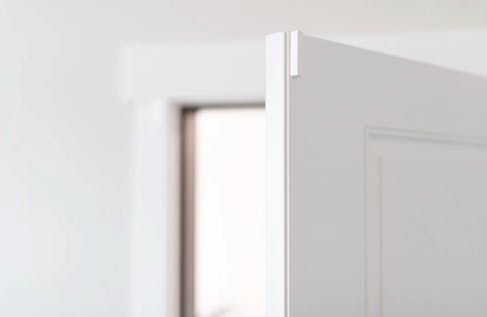
How to Improve the Security of Your Door
Most doors won’t be able to withstand an experienced burglar. An average intruder can easily pick the average door lock. If the door lock is too difficult to pick, some burglars will choose to force the door open by kicking it. An Idaho news station interviewed 86 convicted burglars and asked the question, “How did you typically break into a home or apartment?” One burglar said, “I would kick in the door rather than break glass. Loud bangs are better than loud glass breaking, plus you run the risk of getting cut.” Because most burglars will break down the door, it’s important to have proper security and protection around the doors of your home.
First, you should invest in a home security system. Having a home security system can increase the protection around your home and decrease burglary by 80 percent. Home security systems are the perfect option for those looking for nonintrusive protection that won’t change your home’s appearance. You will need door alarms, window alarms, and home security cameras in your home security system to get the best value from the alarms.
A door alarm is a small unobtrusive device that is installed on the inside of the door. The sensor comes in two parts. The first half of the sensor is installed on the door while the other half is installed on the door frame. When the two are installed, they should align, creating an electrical current. If the door opens while the device is armed, it will trigger a siren meant to scare away an intruder and alert the monitoring agency that there is an intruder in the home.

Homeowners shouldn’t undervalue the importance of protecting their windows. Often, if a burglar finds that they can’t enter the home through a door, they turn to the first-floor windows. To protect your first-floor windows, homeowners can install window alarms. There are two main types of window alarms: window sensors and glass break detectors. A window sensor can be installed on the window itself. When the window opens, the device triggers an alarm that will notify the burglar that emergency services are on the way, scaring away the intruder in most cases. A glass break detector is not installed on the window and is instead placed in the same room as the windows you want to protect. The glass break sensor listens for the frequency of breaking glass. If glass breaks near the sensor, it triggers the alarm.
Homeowners should also install security cameras around their home to gather evidence of any possible break-ins, even if the break-in was only an attempt. Home security cameras provide the police and insurance companies with evidence, benefitting the homeowner.
Finally, homeowners should invest in professional monitoring from a security company to ensure that if any of your alarms installed in the home go off that someone is standing by to send help. Professional monitoring helps to protect the home by ensuring that every home has professionals that will send you help even if you’re unable to call for help yourself. If the alarms are monitored, it is significantly more likely that the burglar or intruder will be caught. Homeowners should take extra steps each day to ensure the safety of their home and family.
